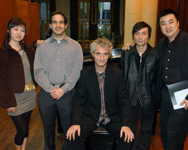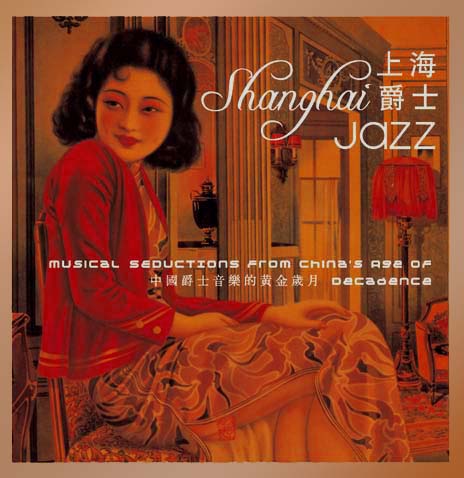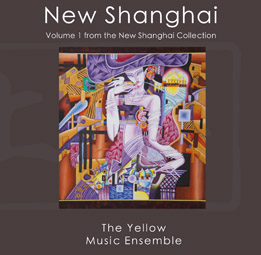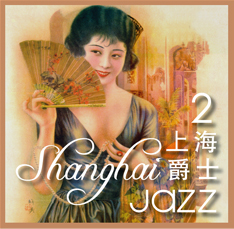The Story of Shanghai Jazz:
In the colourful cabarets and sepia-lit dance halls of Old Shanghai, Jazz music set the background score to a fleshy world of mobsters, adventurers, and sing-song girls. Old Shanghai was the uncontested Jazz capital of Asia, where musicians from the World over tested their musical mettle nightly to the delight of enthusiastic audiences.
In 1935, Du Yu Sheng, the notorious overlord of Shanghai's ominous "Green Gang" ordered into creation the first all-Chinese jazz group, called "The Clear Wind Dance Band", to perform at the Yangtze River Hotel Dance Hall. Critics called this music ‘pornographic,’ but the band played on just the same.
The wheels of time brought Shanghai's heady heyday to an end as the once-bustling nightclubs were boarded up or converted into Communist factory buildings, and Jazz music was outlawed as an 'indecent' form of entertainment...Until Now.
(Read The Full Story)
The Album:
"Shanghai Jazz: Musical Seductions from China's Age of Decadence" features classics like “De Bu Dao De Ai Qing” (The Love you Can’t Get), delivered through the titillating gravel-voice of ‘Ginger’ Zheng ZhiXiao. Things get jumping with tunes like the riotous “Wo Yao Ni De Ai” (I Want Your Love)—charged with life and humor by the confidently flamboyant ‘Coco’ Zhao Ke, and closes with a bittersweet version of “Qing Ren de Yan Lei” (Lovers Tears) sung with heart-wrenching compassion by ‘Carrie’ Zhang Le.
In total “Shanghai Jazz” contains contributions from a cast of more than twenty talented young Chinese musicians, the leaders of an exciting jazz revival amidst the dramatic social and economic reform of the New Shanghai.-

Yellow Music Ensemble
|

©2004 John Huie Music. Distributed
by EMI Music Hong Kong

"The music of Old Shanghai has been given new life in this beautifully recorded CD, which features some of China's most prominent young musicians performing Shanghai's most precious old Jazz classics."
|
And out now
 Reviews Reviews
www.johnhuiemusic.com
©2007 John Huie Music. Available on-line now.
|
Chinese instruments and jazz
‘New Shanghai’, title of The Yellow Music Ensembles’ debut CD, seamless fuses Chinese traditional instruments into the contemporary jazz arena.
Released by EMI/Push Sound on January 26th, the music of Australian composer, John Huie, is performed by a group of top jazz and Chinese instrumentalists, offering a fresh sound to the evolution of Shanghais’ rich musical heritage.
Yellow Music
The term ‘yellow music’ was used as early as 1926 by May 4th musical reformers condemning the works of composer Li Jun Hui, labeling them as ‘fleshy’, ‘pornographic’ and ‘decadent’.
Fusing Chinese folk melodies with western jazz and the styles of such composers as George Gershwin seems innocent enough, but having them performed by rows of teenage girls 'clad in costumes that left their arms and legs unencumbered' , drew its’ critics .
This yellowness to which the authorities objected was not so much the exposed skin color or even the urban pentatonic quality of the music, but its’ Chinese-ness, and perhaps its’ blackness as well.
During the 1920s jazz was racialized and assigned to the lowest rungs of the musical evolutionary ladder, the Shanghai Conservatory considered jazz to be ‘a bad form of Western music’ much the same manner as were Chinese folk tunes; ‘primitive music composed with a pentatonic scale’. This is obviously not the case in the 21st century.
We have revived this concept in describing the modern instrumental fusion of Chinese and Western musical styles.
John Huie
And out now

|

![]()
